The Mekong River in Cambodia breathes with mystery and spirituality. The river has long been revered by the Khmer people, and its sandy banks are dotted with ancient temples and shrines. Local legends abound about the river, from stories of mysterious creatures lurking beneath the surface (like the Mekong giant catfish, which is real and grows to 10 feet long) to tales of religious spirits and healing powers. The best part? There are river dolphins in the Mekong River!
Cue the happy tears, because this is something I never dreamed that I’d see. Not just because of how rare and endangered the Irrawaddy river dolphin is, but because these elusive cuties are only found in a couple of places in the world. And accessing those places is extremely difficult.
Where to see Irrawaddy river dolphins (and why it’s so dangerous)
One of the best places to see Irrawaddy river dolphins is Kratie, Cambodia. We were coming from Bangkok, so before we could paddle into a flooded forest to quietly observe some of the just 80 mekong dolphins left in the wild, we took an 8 hour bus from Bangkok to Phnom Penh (Cambodia’s capital) and another 6 hour bus to Kratié.
Finally, a physical 5+ hour kayaking trip (upstream with rapids and whirlpools to navigate) brought us to the still water of the Kampi dolphin pool.
It’s CRITICAL to note that Cambodia has an estimated 4 to 6 million active landmines and unexploded ordnances (UXOs) left over from decades of war during the Khmer Rouge (a brutal communist regime that ruled Cambodia from 1975 to 1979).
Because of this, hiring a local driver who is familiar with the marked roads is more important in Cambodia than in almost anywhere else in the world. These dangerous unexploded landmines, millions of which remain undetected to this day, pose significant risk of death and amputation to locals and travelers. Hire a driver.
Now back to the fun stuff!
How many Irrawaddy river dolphins are left and why are they endangered?
Irrawaddy river dolphins are 1 of 6 freshwater dolphin species.
It’s difficult to get exact data on how many Irrawaddy river dolphins are left, but the most recent estimate is ~80 individuals in Cambodia and Myanmar. They’re endangered and face extinction as a result of human activity— degraded habitats, illegal hunting, entanglement in fishing line and nets, the use of explosives in the river for fishing, dam construction, and competition for freshwater resources.
Okay, that wasn’t exactly fun but stick with me.
Irrawaddy dolphins get their name from the former name of the Ayeyarwady River in Myanmar. When Myanmar was called Burma, this river was called the Irrawaddy River.
These little dolphins are indisputably adorable— to me, they look like baby beluga whales, which are gray when they’re born. At first glance, they also share the beluga’s rounded rostrum. These little guys grow to be just 6-8 feet long and weigh ~400 pounds.
Our full experience kayaking with river dolphins in Kratie (detailed schedule and what to expect!)
We went with a local tour guide, Socheat (nicknamed “Lucky”), who runs Dolphin Kayaking Adventures, one of two small local businesses that offer this incredible wildlife experience.
7:30AM
A tuk tuk picked us up from our base at Sorya Guesthouse (an 8-room guest house starting at just 8 USD/night sitting on the banks of the Mekong) as the sun was rising over the river. The air was still cool and the mist was rising off the water. We rode north for just under an hour on orange dirt roads, occasionally stopped by crossing Kor Khmer cattle, to an entry point in the river. After meeting our local guide, we packed our things into a dry bag and descended a small concrete ramp to a muddy bank where the kayak was waiting.
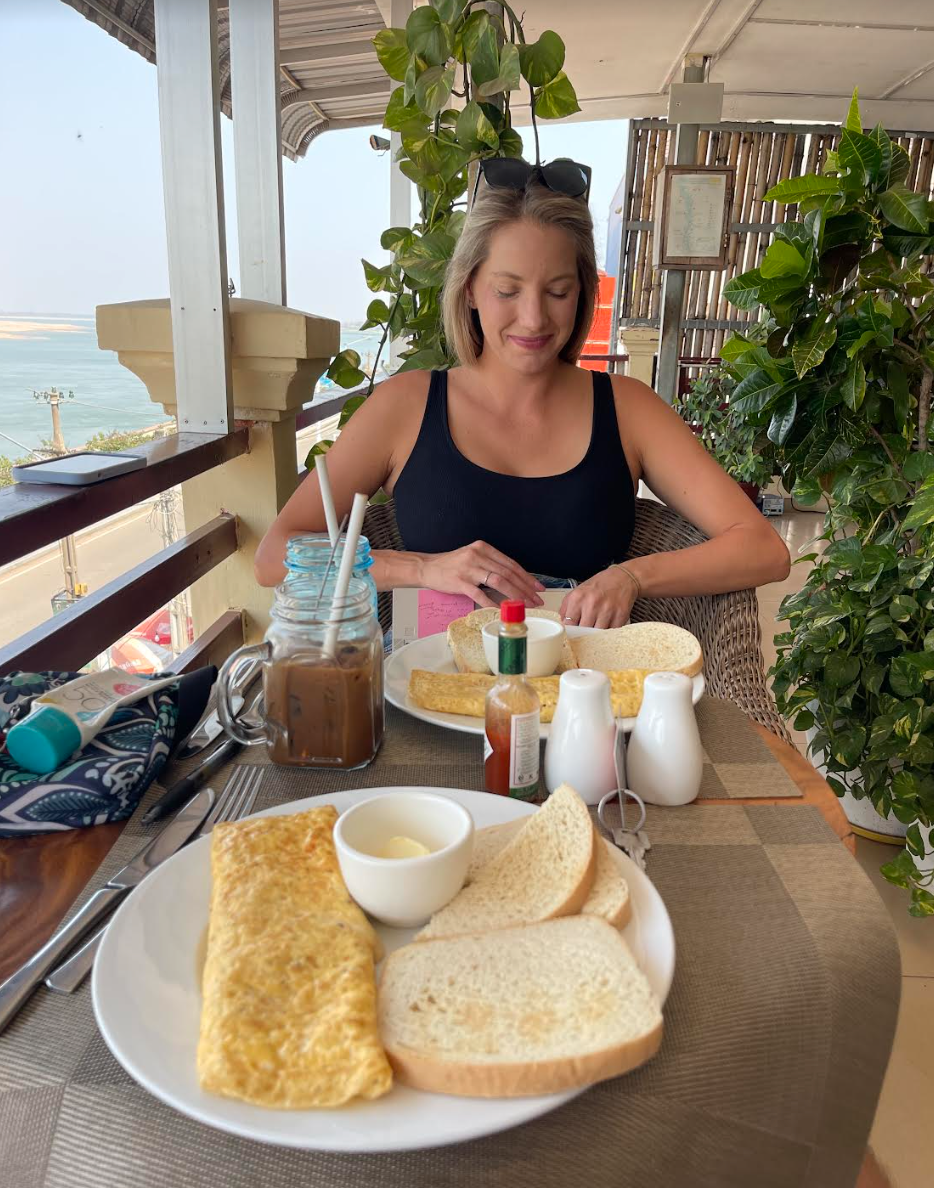
8:30AM
Without much direction or chat, our guide took off across the river. The peaceful downstream paddle I had envisioned (and promised my boyfriend when I sold him on doing this with me) was nonexistent. I had pictured our paddles gently breaking the surface of the water. Instead, we battled lateral and head on currents in whipping wind and baking sun. Needless to say, we both got VERY sunburned.
Pro tip: I did this trip in March, which is a great time to visit Cambodia because it’s the dry season (fewer mosquitos).
10:00AM
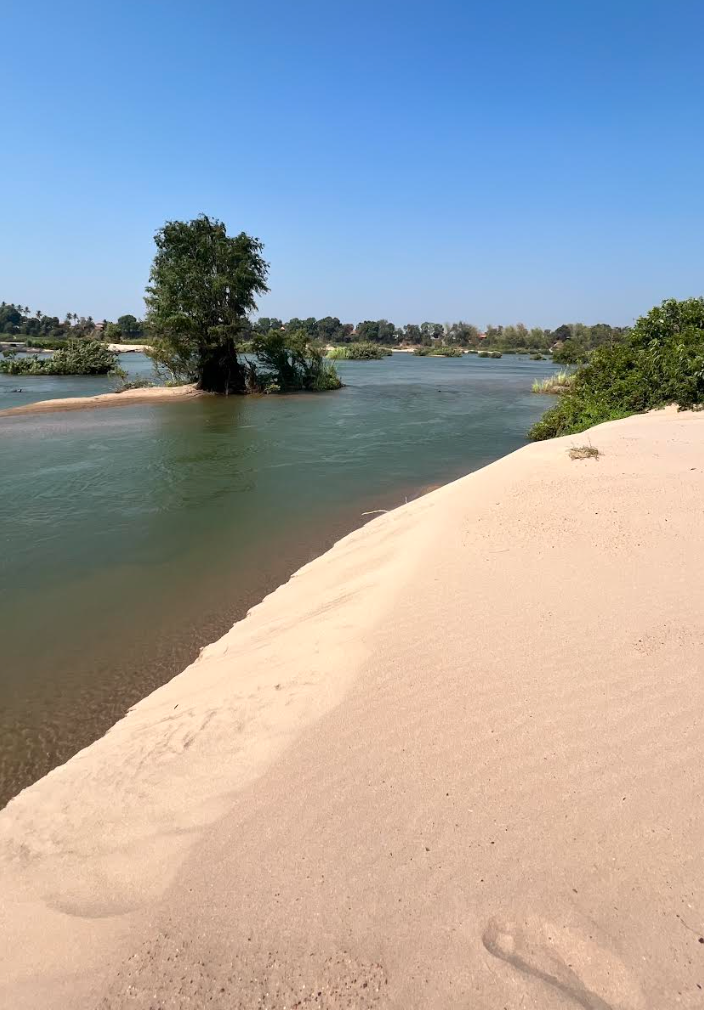
After a couple of hours, we stopped (mercifully for our sore arms) for lunch at a sandy island for a swim and lunch: bananas and a rice and coconut milk “push up pop” filled with what looked and tasted like black-eyed peas.
We wrapped up lunch and continued kayaking down the river. Again, I had imagined us taking in the beautiful scenery and enjoying the peacefulness of the water, but instead, we stayed totally engaged and close behind our guide to navigate whirlpools, rapids, and rocks.
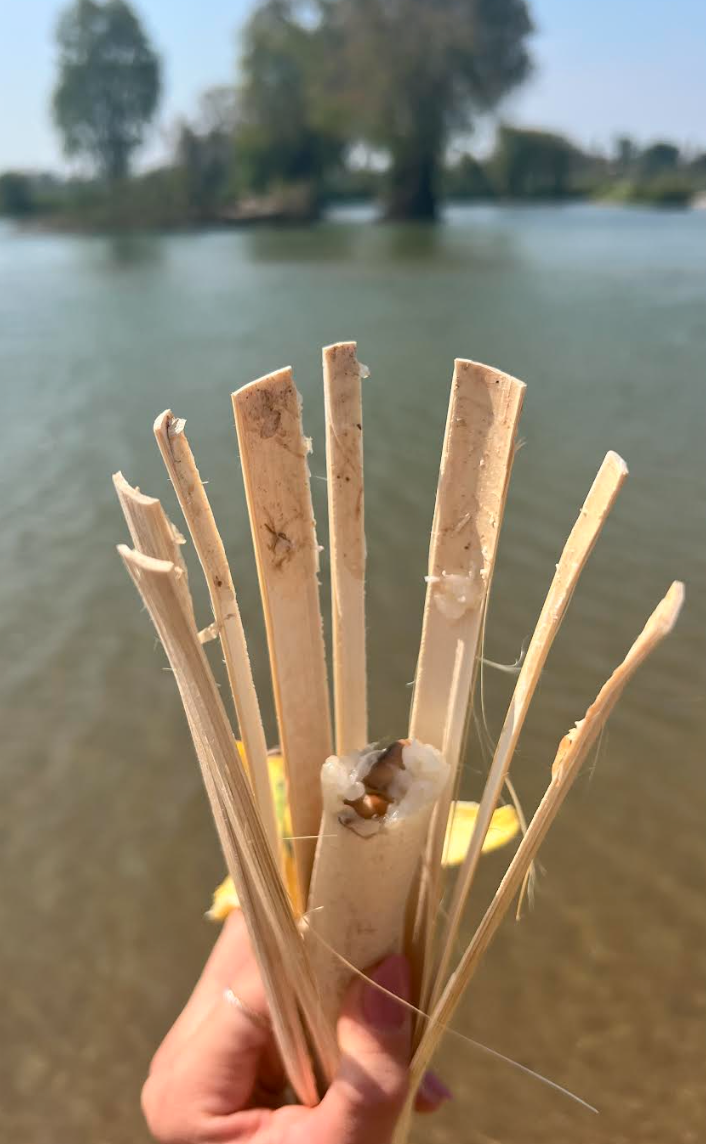
1:00PM
After another hour or 2 of paddling, we finally saw what we had come for— a pod of Irrawaddy river dolphins swimming near the shore! We approached slowly and quietly, not wanting to disturb them. The dolphins didn’t approach the kayaks with the inquisitive and playful behavior you see in movies; it was better than that! Just observing their natural behavior, quietly and from a respectful distance, really did make me cry happy tears.
We spent the next hour or two quietly paddling up and pool, following the dolphins at a distance as they swam and played. Then, exhilarated but exhausted, we exited the river and traveled by tuk tuk back to our guesthouse.
An unexpected twist on this day was that the river appeared (1) clean and (2) deserted. We didn’t see other kayakers, boaters, or even a single fisherman until we actually reached the Kampi dolphin pool. So many people told me that the Mekong would be disgusting— full of trash and chemicals because of the downflow from China. While we only saw about 12km of the river, at the surface, there was significantly less trash and plastic than there is in any river that I’ve ever seen in the United States.
Know-before-you-go tips for kayaking with river dolphins in Kratie
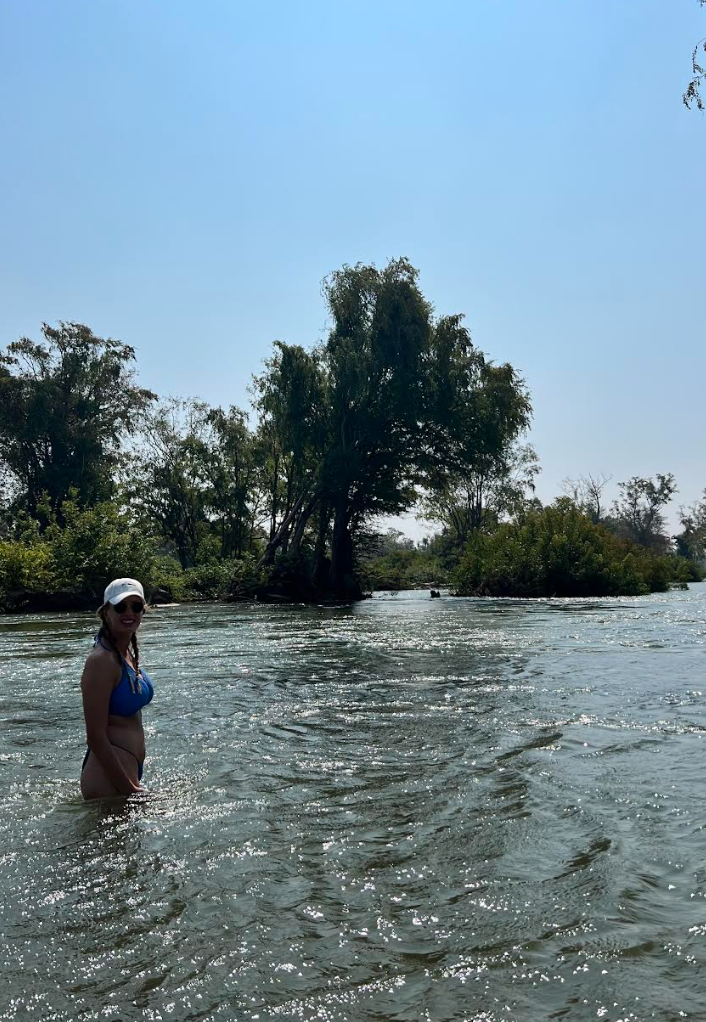
-
Level setting your expectations. The currents in the river will depend on the time of year and even the day that you visit. This was a physical activity that may not be suitable for all levels of physical fitness.
-
That you or your partner (if you’re going with someone) are an experienced kayaker. This means you have some team paddling know-how and can rudder to stop and redirect the kayak quickly. There’s little to no instruction about the kayaking itself and this is a fast-paced experience where you encounter rapids.
-
Eating a hearty breakfast. Lunch was light and we were out there for a long time.
-
MORE. SUNSCREEN. You can never put on enough when you’re on the water and the sun in Cambodia hit different.
Kayaking with Irrawaddy river dolphins in the Mekong River was an adventure of a lifetime. I highly recommend it to anyone who loves nature and adventure and has the physical fitness to enjoy it. I’ve read other accounts of people experiencing this that had a less physically grueling time than we did, so like I said— it varies. But overall, the opportunity to see these endangered animals up close and in their natural habitat was something that you won’t want to miss!
To learn more about how people are working to save this the Irrawaddy river dolphin, visit https://marine-flagships.panda.org/defending-the-irrawaddy-dolphin.html.
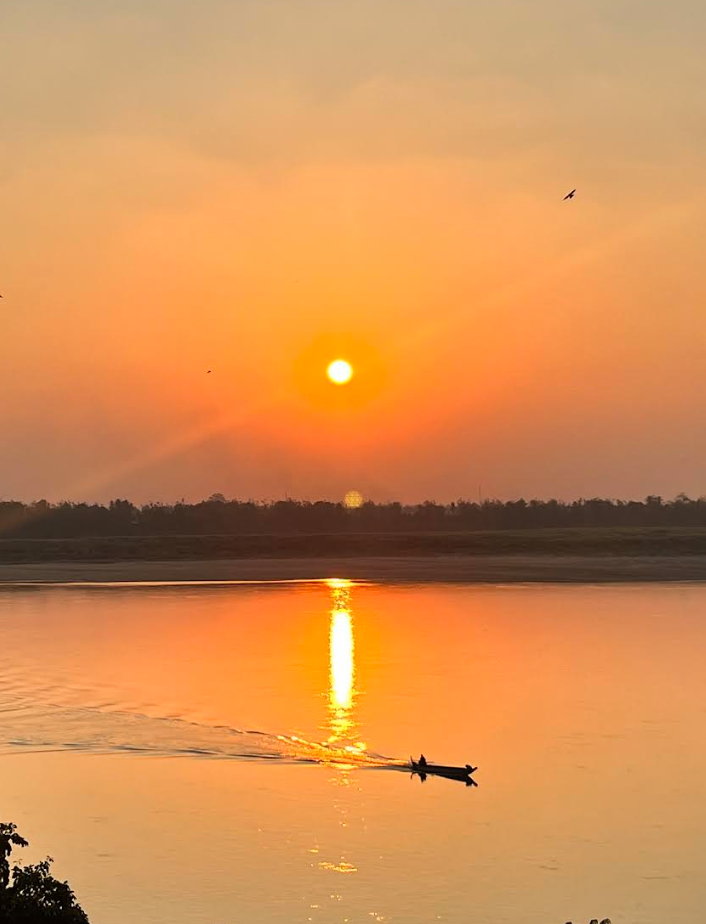
This blog may contain affiliate links, which means that at no cost to you, I may earn a small commission of any products sold. I only feature products that I believe in and use. Your support means the world to me and allows me to host this website!
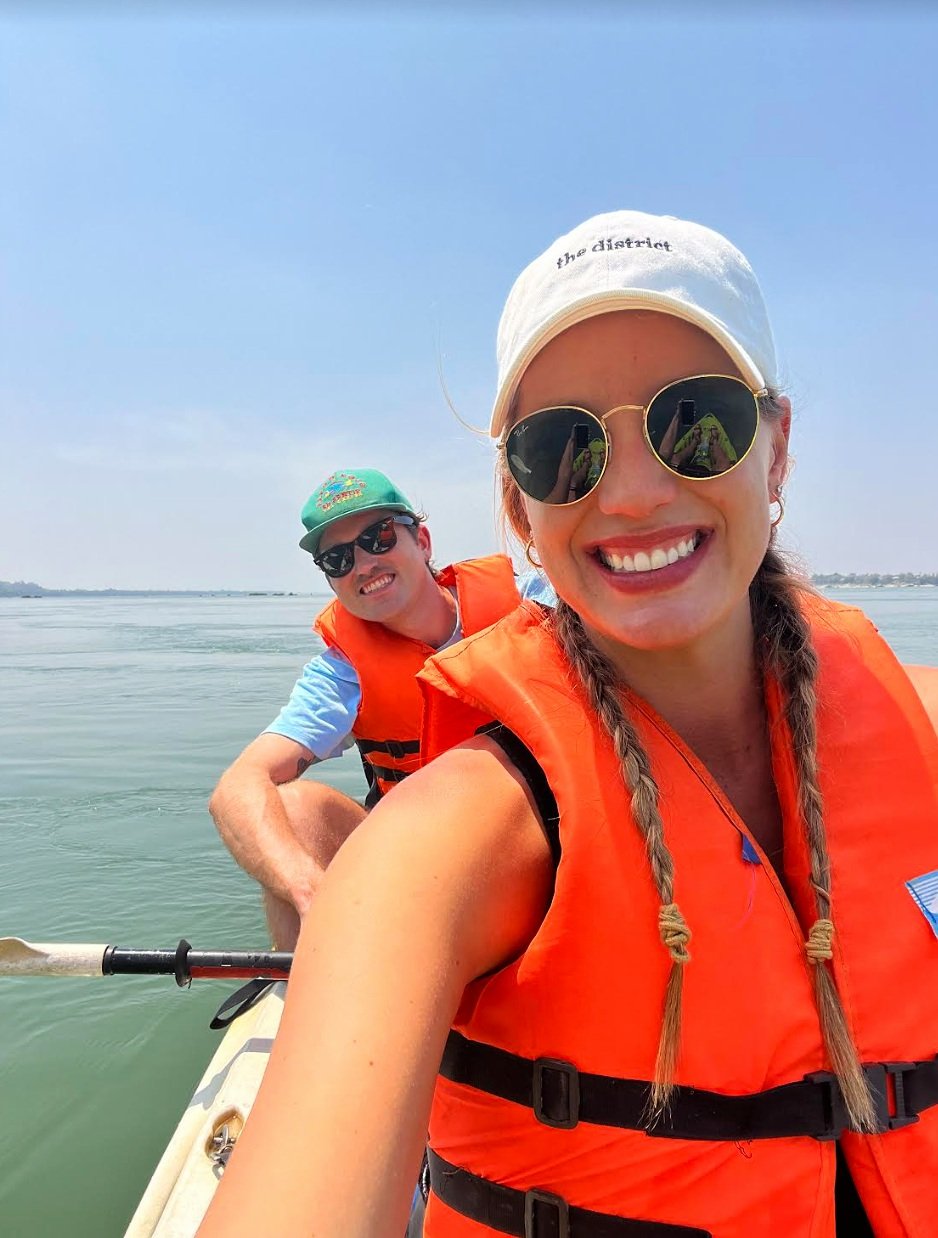

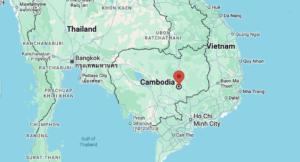
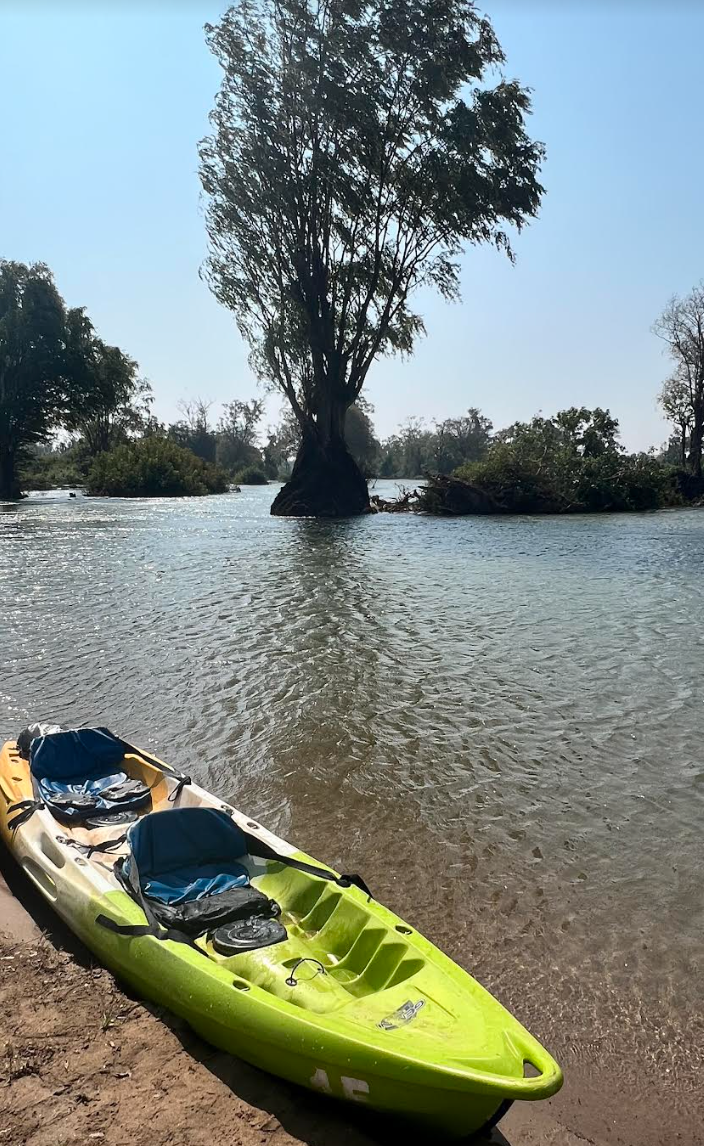
LEAVE A COMMENT